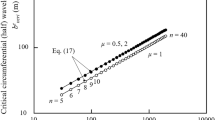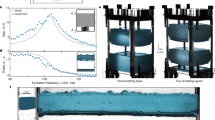Abstract
IN a letter to NATURE of February 18, 1897, I pointed out that a thin cylindrical floating shell was in equilibrium under the actions of its own weight and the external fluid load, the shell having its axis horizontal and just touching the surface or else completely submerged. The method was that of Rankine's conjugate load-areas, and building on this Dr. Thomson and myself made practical graphical solutions of the circular masonry arch; these were privately printed and circulated, and met with the approval, among others, of Prof. Perry, London, and Prof. Malverd Howe, America. In revising this matter for the new edition of our “Applied Mechanics,” I find that polygonal cylinders of uniform plates freely hinged at their edges and displacing their own weight of fluid and lying horizontally are also in equilibrium, provided the polygon be regular.
This is a preview of subscription content, access via your institution
Access options
Subscribe to this journal
Receive 51 print issues and online access
$199.00 per year
only $3.90 per issue
Buy this article
- Purchase on Springer Link
- Instant access to full article PDF
Prices may be subject to local taxes which are calculated during checkout
Similar content being viewed by others
Author information
Authors and Affiliations
Rights and permissions
About this article
Cite this article
ALEXANDER, T. Thin Floating Cylinders. Nature 66, 6–7 (1902). https://doi.org/10.1038/066006c0
Issue Date:
DOI: https://doi.org/10.1038/066006c0
Comments
By submitting a comment you agree to abide by our Terms and Community Guidelines. If you find something abusive or that does not comply with our terms or guidelines please flag it as inappropriate.



